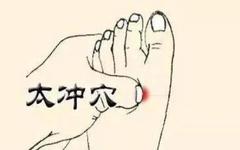Inheriting Traditional Chinese Medicine Culture and Cultivating TCM Talent
We hope more people can share this with their friends, allowing every Chinese person to learn and understand TCM.








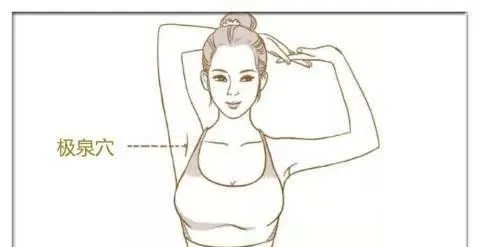
The human body is an organic whole, with the five organs (heart, liver, spleen, lungs, kidneys) and six bowels (gallbladder, stomach, small intestine, large intestine, bladder, san jiao) interconnected through meridians. The organs are like essential facilities in a city, such as water plants, power plants, communication facilities, substations, and waste treatment plants, while the meridians are the various networks connecting these basic infrastructures, like water pipes, power grids, and roads. The organs are fundamental, but the networks are also indispensable, making the human body a complete individual. TCM believes that through the internal and external connections of the meridians, organ diseases can reflect on the body surface, presenting specific symptoms and signs. Stimulating the corresponding acupuncture points on the body surface can treat related organ diseases, as the saying goes, “What is inside must manifest outside; by observing the outside, one can understand the inside, and by treating the outside, one can adjust the inside.”
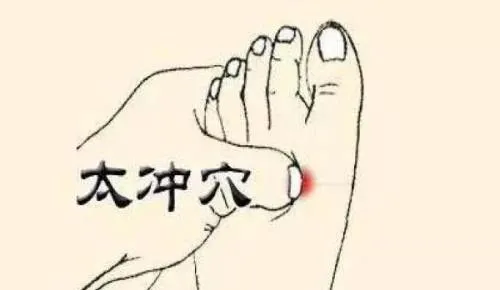
1. Massaging the Xin Jing Ji Quan (Heart Meridian Jiquan Point) Nourishes the Heart and Calms the Spirit
Massaging the acupuncture points on the heart meridian is beneficial for treating heart diseases. For example, the Jiquan (極泉) point on the heart meridian is a famous point for treating heart disease. Regularly pressing the Jiquan point can calm the heart and spirit, relieve depression, and stop fright.
The specific method is: Place the four fingers of your right hand on the outer side of the left pectoralis major, with the thumb pressing on the inner side of the pectoralis major. Then use the index and middle fingers to gently press the Jiquan point under the armpit; while pinching the pectoralis major, use the index and middle fingers to knead this point, repeating the process 10 times, then switch hands and repeat.
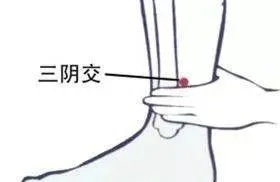
2. Massaging the Gan Jing Tai Chong (Liver Meridian Taichong Point) Can Soothe the Liver and Relieve Depression
Massaging the Taichong (太冲) point on the liver meridian can soothe the liver, relieve depression, regulate qi and blood, transform dampness, and open the meridians. It is effective for symptoms such as fullness in the hypochondrium, headaches, dizziness, hernia pain, difficulty urinating, and irregular menstruation. This method is especially suitable for those who tend to bottle up their anger.
The specific method is: Use your thumb to massage the Taichong point, pressing upwards from below. Massage both feet for 5 minutes each side. You can also knead from the Taichong point to the Xingjian (行间) point, which may enhance the effect.
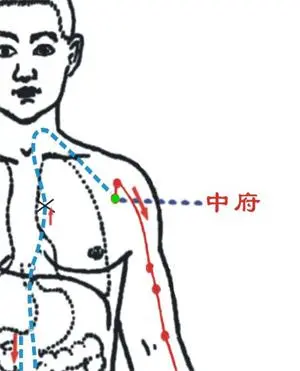
3. Massaging the Pi Jing San Yin Jiao (Spleen Meridian Sanyinjiao Point) Can Strengthen the Spleen and Nourish the Blood
Regularly massaging the spleen meridian has the effect of strengthening the spleen and nourishing the blood. The Sanyinjiao (三阴交) point is where the spleen, kidney, and liver meridians intersect, and is a magical remedy for gynecological diseases. Regularly massaging this area can prevent and treat irregular menstruation, dysmenorrhea, excessive leukorrhea, metrorrhagia, pelvic inflammation, abdominal pain, diarrhea, and neurasthenia. It should be noted that ancient people used this point for abortion, so pregnant women should avoid massaging this area.
The specific method is: (1) Press the tip of your thumb on the Sanyinjiao point, then gradually apply deeper pressure and twist; (2) Gently and slowly knead the Sanyinjiao point with the thumb pad.
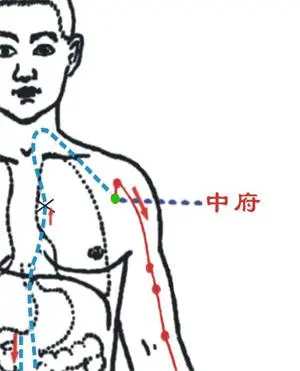
4. Massaging the Fei Jing Zhong Fu (Lung Meridian Zhongfu Point) Can Treat Lung Diseases
Massaging the lung meridian can improve symptoms such as difficulty breathing, cough, dry throat, runny nose, and asthma. For example, regularly massaging the Zhongfu (中府) point on the lung meridian can prevent and treat cough and asthma.
The specific method is: Use both thumbs to press on both sides of the Zhongfu point above the chest, pressing at least 5 times each time, holding each press for 3-5 seconds.
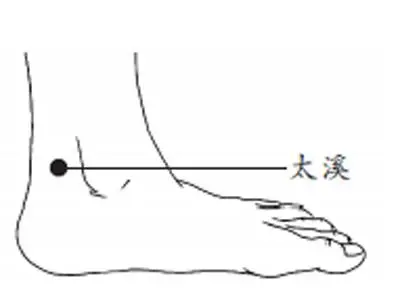
5. Massaging the Shen Jing Tai Xi (Kidney Meridian Taixi Point) Can Improve Kidney Function
The Taixi (太溪) point is a key point on the kidney meridian, also known as one of the “Nine Points to Return Yang” in ancient times. Regularly massaging this point has a significant effect on improving kidney function.
The specific method is: Use the thumb of the opposite hand to knead the Taixi point, or use a massage stick or smooth wooden stick to knead, ensuring the pressure is gentle, aiming for a feeling of soreness and swelling.
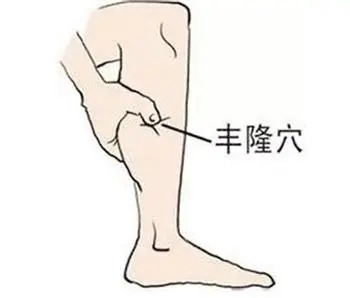
6. Massaging the Dan Jing Feng Long (Gallbladder Meridian Fenglong Point) Can Reduce Belly Fat
Qi and blood flow into the gallbladder meridian during the hour of the rat (11 PM to 1 AM). At this time, the yang energy of the body is just beginning. If we eat food during this time, the energy we consume will be converted into fat. Taking advantage of this time when qi and blood flow, it easily accumulates and stores along the gallbladder meridian, leading to a big belly. To reduce your belly, you can frequently press the Fenglong (丰隆) point on the gallbladder meridian.
The specific method is: Place your left (right) leg on the opposite knee, with the tip of your right (left) middle finger on the Fenglong point, and the thumb on the opposite side, applying pressure for a minute. Do this once in the morning and evening.
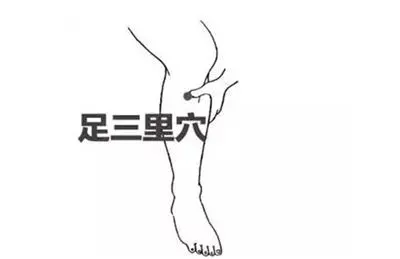
7. Regularly Tapping the Wei Jing (Stomach Meridian) Can Help with Weight Loss
Overeating can damage the spleen and stomach, leading to spleen and stomach deficiency, impaired digestion, and fat accumulation, which is a mechanism for obesity. Tapping the stomach meridian daily can help eliminate excess fat without rebound.
The specific method is: Starting from the collarbone, follow the two breasts, over the abdomen, down to the front of the legs, and continue tapping down to the ankles. When tapping the stomach meridian, apply moderate force, ensuring to tap along the meridian from the outer side of the tibia to the line connecting the second toe, starting from the Zusanli (足三里) point. Areas that feel painful are the acupoints and should be focused on; also, tap the highest point on the foot.
8. Massaging the Xiao Chang Jing (Small Intestine Meridian) Can Treat Shoulder and Arm Pain
Shoulder and arm pain is one of the symptoms represented by the small intestine meridian. If we gently press and knead the outer side of the arm along the small intestine meridian, it can improve this discomfort.
When massaging the small intestine meridian, first locate its pathway, which runs from the outer side of the little finger up the outer edge of the arm, then towards the shoulder joint, moving towards the spine for a while, and then up along the neck to the cheekbone and to the ear. Massage along the meridian upwards.

9. Massaging the Da Chang Jing He Gu (Large Intestine Meridian Hegu Point) Can Treat Toothache
The TCM saying goes, “Pressing the Hegu point can relieve facial pain.” Therefore, massaging the Hegu (合谷) point on the large intestine meridian can treat toothaches, gingivitis, glossitis, and parotitis. For example, when experiencing a toothache, pressing the Hegu point for 5 minutes can alleviate the pain. If there is persistent gum pain, regularly pressing the Hegu point can have a certain therapeutic effect.
When pressing the Hegu point, use the thumb and index finger of the opposite hand to apply pressure until a feeling of soreness and swelling is achieved. Press twice a day.
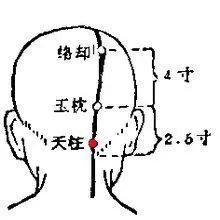
10. Massaging the Pang Guang Jing Tian Zhu (Bladder Meridian Tianzhu Point) Can Prevent and Treat Occipital Pain
The Tianzhu (天柱) point is located at a vascular and nerve junction. Regularly massaging the Tianzhu point on the bladder meridian can effectively eliminate occipital pain.
The specific method is: Place both thumbs on the Tianzhu point, with the other four fingers naturally supporting the head; apply pressure upwards at an angle for 5 seconds, with the pressure being comfortable.
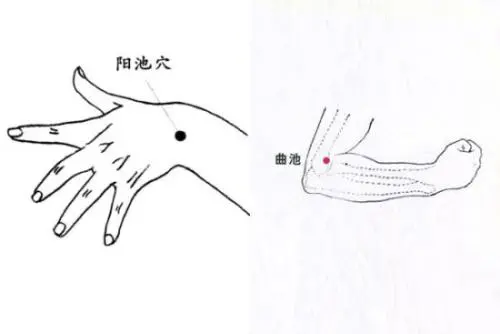
11. Massaging the San Jiao Jing Yang Chi (Triple Burner Meridian Yangchi Point) Can Alleviate Cold Hands and Feet
Massaging the Yangchi point on the triple burner meridian can treat cold hands and feet. Regularly massaging this point can promote blood circulation, balance hormone secretion, and warm the body, thus eliminating the cold sensation in the hands and feet.
When massaging, it is best to use both hands together, first pressing the Yangchi point on one hand with the middle finger of the other hand, then switching to the other hand. The massage should be prolonged and gentle.
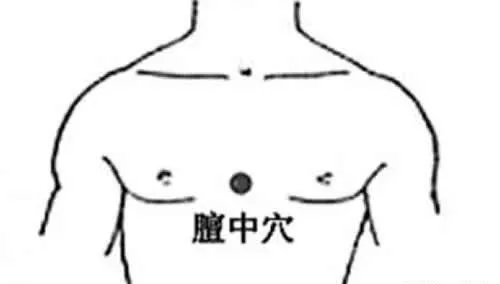
12. Massaging the Xin Bao Jing Dan Zhong (Pericardium Meridian Danzhong Point) Can Regulate Qi in the Chest
The Danzhong point is located in the center of the chest and is one of the eight meeting points, where qi converges and gathers. It is a key point for regulating qi in the body, with effects of broadening the chest, regulating qi, stopping cough, relieving asthma, transforming phlegm, and dispersing stagnation. It is mainly used to treat chest obstruction, heart pain, cough, and asthma. The Danzhong point is the mu point of the pericardium, which protects the heart. Therefore, stimulating the Danzhong point also has the effect of calming the spirit and relieving anxiety, used for treating palpitations and irritability.
When locating the point, you can lie down or sit upright, using the middle finger to knead the point in a clockwise and counterclockwise manner. The pressure should be moderate, with even and gentle techniques, avoiding excessive force. Massage once in the morning and evening, for 3-5 minutes each time.
Reminder from the Old TCM Doctor
There is a pericardium surrounding the heart, which has an important function of protecting the heart from external pathogens. If external pathogens invade, the pericardium will protect the heart. Once the heart is diseased, it will manifest in the pericardium. Therefore, it is essential to take care of the pericardium by regularly massaging the pericardium meridian. When massaging, first locate the points such as Zhong Shen (中神), Lao Gong (劳宫), Da Ling (大陵), Neiguan (内关), Jianshi (间使), Xiemen (郄门), Quze (曲泽), Tian Quan (天泉), and Tian Chi (天池), then press each point for 2-3 minutes daily.
Disclaimer: The content of this article, if it involves formulas or therapies, is for reference only. Please do not use it indiscriminately. The article and images are sourced from the internet; if there is any infringement, please contact for removal.
Share with those who care.
The more people see it, the more health there will be!
Today's Recommendation

